Being 100% aware of why your station achieved its ratings position is just as important as getting there, program director Peter Yiamarelos says in an interview with us.
How to manage team expectations to secure management backup for your consistent strategy and creative tactics? How to use the right combination of programming tools for high ratings and distinctive branding for your station? Questions we try to answer in a conversation with this experienced program director. “Don’t try to do the Pepsi vs. Coca-Cola thing.”
“If you can really curate each hour intimately, then the rewards are great”

Tweaking an auto-generated playlist in 30 minutes a day doesn’t cut it in competitive markets (image: Thomas Giger)
Gain radio experience worldwide
Throughout his career, Peter Yiamarelos – who has a Greek surname, but speaks Aussie English – has moved a couple of times from Down Under to Hellas (and back). It led him to a variety of radio companies, markets, stations and formats, allowing him to see radio from several different perspectives. During the time of our talk, he had just exchanged the Athens sun for the Australian sea to program Sea FM and 2GO 107.7 as the Group Content Director Central Coast for Southern Cross Austereo. Unlike most radio people, his career didn’t begin in radio. “In the late 1980s, I was working in the computer industry. It was growing, but I wanted to become a voiceover. I thought it would be a great job to read commercials and get paid for it.” His search for voiceover training led him to local radio and a broadcasting course at the Australian Film, Television & Radio School. Growing up in Sydney, he had already become passionate of music, and a big fan of Mainstream Rock / Active Rock station Triple M.
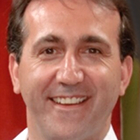 Discover your favorite discipline
Discover your favorite discipline
You’ve been a music director early in your career. Sounds like a fun gig!
“Yes. After I got my first radio job and a daily on-air shift, I realized that what I enjoyed most was work behind the scenes. Programming music really got me excited about radio, something I would never have discovered unless I went through the initial process of trying to get into radio in order to learn how to read commercials.”
Study your complete playlist
Would you agree that music programming is a magic combination of science and art?
“That’s what I find so fascinating”, says Yiamarelos, who likes both the analytical and creative part of music scheduling. “You need to be intimate with every single song, whether you have a playlist of 150 or 700 titles. It’s easy to simply push the auto-schedule button and spend half an hour finessing the music log, but I believe you should be spending at least 6 hours a day on a log. That’s not possible in a lot of cases – especially on a Friday, where you have to get 3 days worth of music out by 6 o’clock, haha. But, as a habit, if you can spend enough time and really curate each hour intimately, then the rewards are great.”
“Listeners come to you because of the music”
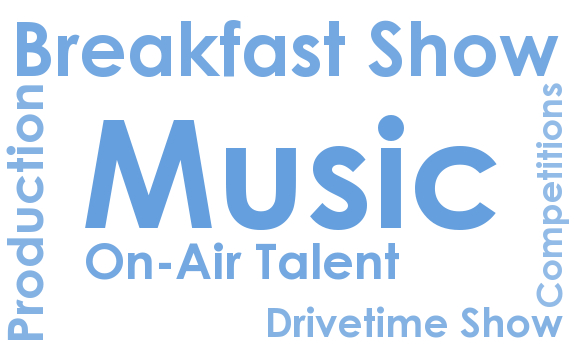
Your breakfast & drivetime shows, on-air talent, production and competitions follow after (image: Thomas Giger)
Build strong PD-MD collaborations
What do you see as ‘difficult’ in music scheduling?
“Following the rules. The music director takes his direction from the program director. While you need to understand radio programming, and support your PD with ideas and thoughts, you need to ensure that your execution of the programming strategy is 100%. He or she relies on you for that. Being patient and determined, and intimate with the music, will make you a strong MD. Don’t worry about format clocks; let your program director design those. The more interaction and communication you have with your head of programming, the better you’ll work together as a unit, generating excellent music logs and creating an outstanding radio station.”
 Think of all content
Think of all content
Would you agree that an MD is almost like an APD?
“Exactly. Most program directors are former music directors, who got promoted to assistant program director and then PD.” Peter Yiamarelos’ job description is ‘content director’, a title that is being used more and more. “It’s what you do as a programmer; manage and direct all content that others are creating based on your vision and strategy.”
Optimize your music output
What’s the main lesson you have learned about music scheduling?
“Implement your music strategy without any shortcuts; spend as much time as possible in finessing your music log. You’re a major part of a music brand. An old rule says that 70% of a station’s success comes from the music. A big call to make these days, but in essence it’s true. Despite having a great breakfast show, a great drivetime show, great on-air talent, great competitions, great production… at the end of the day, most listeners come to you because of the music! Whatever you can do to make your music log sit beautifully in a sequence that sits within the strategy, and to go extra mile with it, is worth doing.
“Many listeners will always go back to a Top 40 station”
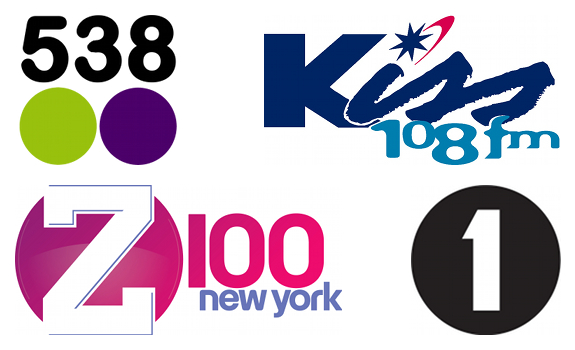
To feel connected to current trends, even middle-aged people listen to CHR (logos: 538 Groep, iHeartMedia, BBC)
Start with radio research
Which music format basics have you found to work anywhere?
“It all depends on which format it is, and which market you’re in. Strategically speaking, if you’re in a city with 3 music brands, you’re naturally going to think and program differently than you would in one with 20. Once you understand your market and your consumer, you can start thinking: what format do I have or what format do I want? If you inherit a music format and don’t have the flexibility to change, that also plays a role.” Yiamarelos explains that a Rock station, playing hits from the last 40 years, would rather spin 700 songs than just 150 (like the average CHR would do). “Song rotations and music categories are based on the total amount of active songs, and that’s based on a number of factors as well. Familiarity is critical.”
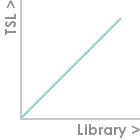 Increase your station’s TSL
Increase your station’s TSL
“For a Rock station, you tend to have artist separations around 2.5 hours, but for Top 40 it’s common to have a 65-minute spread.” Rock formats also have a greater Time Spent Listening: “Your playlist is larger as you have a larger era span. The repetitive impact of a Rock station isn’t as hard to deal with than a CHR brand, playing music from the last 12 months or 3 years, where your TSL is extremely low.”
Attract more female listeners
For Peter Yiamarelos, the most exciting radio format to program is CHR. “It tends to have extremely high ratings, and it’s always evolving. The playlist may change 2 or 3 times a week, depending on the market.” He adds music cycles are changing constantly as well: “What’s hot today, might not be hot in 6 months from now. That’s why many listeners will always go back to a Top 40 station. It’s inherent for females, more so than males, to want to know what music is new. Despite having all these music streaming services, they – fortunately – don’t deliver it in the same way. Radio stations still have that professional element of curating new music. Radio is either a lean-forward or lean-back medium. Streaming services are like an extension of someone’s music collection.”
“If you have those 3M’s in place, you can tactically maneuver your station”
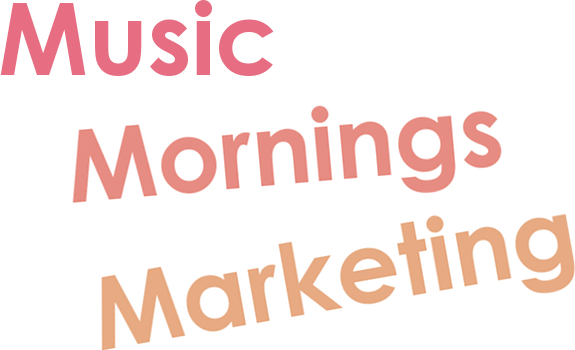
Music, Mornings & Marketing are being seen as the fundamental tools of radio programming (image: Thomas Giger)
Define your target audience
Talking about the appeal of CHR, a city like Bucharest, Romania is an interesting market. There are multiple Contemporary Hit Radios, with main players Kiss FM, Radio ZU, ProFM and Radio 21. They’re all Top 10 rated, while they’re all ‘CHR’ and all play Dance! Isn’t that amazing?
“Yes! In Eastern Europe, male listeners still dominate the radio dial. Males in that part of the world tend to like Dance, so that’s what dominates the Top 40 charts and causes formats in Bucharest to be what they are.” The advice is to appeal to the most influential audience group(s) in your market.
 Find points of difference
Find points of difference
Yiamarelos adds that most of these will target a slightly different audience demographic. For example, Kiss FM’s listenership is slightly older than Radio ZU’s audience: “That distinction is large enough for them to both target Top 40 listeners and Dance music fans, as Bucharest has a huge population. The pie is large enough for everybody to share.” According to Wikipedia, 2 of the 20 million Romanians live in and around the nation’s capital.
Optimize music, mornings & marketing
As a programmer in competitive radio markets like these, where do you find the nuances apart from your chosen demographic?
“The point of difference is mainly in your tools; they all need to be functioning. A lot of stations fall into a trap, thinking: if we have great scheduling software, a great music director and great music research, that’s enough. It’s not. You also need great on-air talent; especially a great morning show, and great marketing. If you have those 3M’s in place – music, mornings and marketing – then you can tactically maneuver your station to achieve those nuances. If your station is not doing well, ask yourself: do we play the best music, delivered by great research? Do we have the best morning? Do we have the best marketing?”
“Strategy should never be developed on gut feeling”

While gut feeling is great for tactics, strategies should rather be based on proven facts (photo: Thomas Giger)
Look beyond your playlist
Peter Yiamarelos has found that even though every market is different – so there isn’t one way to give your brand a distinctive image – there’s always a way to find a USP. “Even where you have 4 CHR stations, each one will sound naturally different to the other. Not everyone is going to be playing the latest Taylor Swift or Katy Perry in a high rotation; each one is going to be doing something different here.” As in this case, the nature of Top 40 listener expectations (playing today’s biggest hits a lot) may limit possibilities to define a station just by the music, he says it could be done through other incentives. In any case, it’s really important for a PD to secure internal backup. “Ensure that the key stakeholders in your company are aware of the expected timeline. Get them to buy in, and ensure that they support you.”
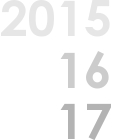 Get long-term team commitment
Get long-term team commitment
And wait for 2 years before saying: ‘we’re going to change the format!’
“Well, yeah, as a program director, if you believe that it might take 2 years, you need to say: I believe it will take 2 years – and ensure that those around you support your plan, regardless… That takes a lot of discipline. It’s like buying stocks or shares. You buy them for medium- to long-term growth; not for short-term growth.”
Ensure CEO & CCO support
How have you experienced the internal discussions within a radio station in order to get backup from your team and management to keep following the plan, no matter what?
“Where a lot of programmers get into trouble, is that they don’t manage the expectations of the general manager and sales director”, Yiamarelos says. “If they expect to have a number 1 station within 6 months, you’re in trouble and won’t satisfy anybody. You need to tell them: I think it’s going to take 2 years. It takes a brave PD to say that, but when he or she has research justifying why, then it’s okay. A strategy should never be developed on gut feel. Tactics can be based on it, as you may implement them for 3 to 6 weeks. But once you’ve put a tactic into place, you’re going to go back to the core of your station; the strategy.”
“Sometimes the obvious answer is not the only answer”
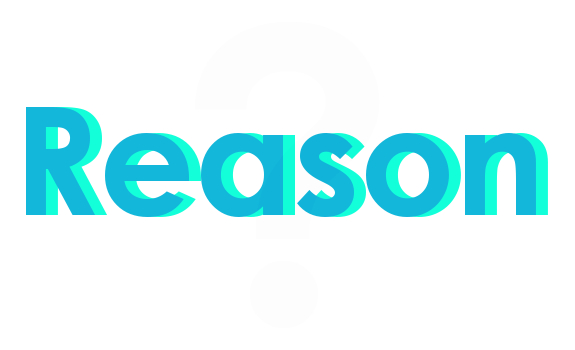
Knowing exactly why your brand became successful is essential for its long-lasting success (image: Thomas Giger)
Claim enough budget & mandate
What makes your game plan a winning strategy?
“There’s nothing like implementing a strategy with lots of money behind you. Launching a new station is one of the best strategies to go with. It’s the most fun, and you’ll have the most budget. If someone wants you to launch a new station, I would jump on board. However, if you’re joining a station that is not doing very well in the ratings, and the general manager wants your help turning it around, there are some serious questions you need to be asking. For example, how big is the research, programming & marketing budget? What have you guys done over the last 12 months? What do you plan to do over the next 12 months? How much flexibility do I have to hire & fire people? Unless you have full control over every second of every day, you can never fully implement a strategy that will take you down the road to success. Know how much scope you have, to realize how much success you can apply.”
 Keep your challengers away
Keep your challengers away
Can you give an example case of a ‘battle’ with a competing station? Which strategy did you guys apply, and how did it work out?
“One of the stations that I was working on in Athens was ranking quite high in the ratings. A competing station had just launched, and was trying to take a slice of our audience”, Peter Yiamarelos recalls. It was decided to apply a defense strategy to protect their position.
Know your success factors
“We defended against that by pulling out all stops. I can’t really share the full strategy, but I can tell you a philosophy. It’s a long road to achieve ‘number 1’ in a market, but when you do, be 100% aware of how you’ve achieved your position. Only then will you be able to retain your ratings. Many programmers do a great launch; they do great music research, have a great morning show, give away lots of money. They’ll find themselves quickly climbing the ratings, and eventually become number 1. But they don’t know how exactly they got there. They think they know, but actually there’s another reason behind the reason. You need to quickly realize what got you there. It may well be one of those particular factors, but sometimes the obvious answer is not the only answer.”
“Have a point of difference that your competitor cannot copy”
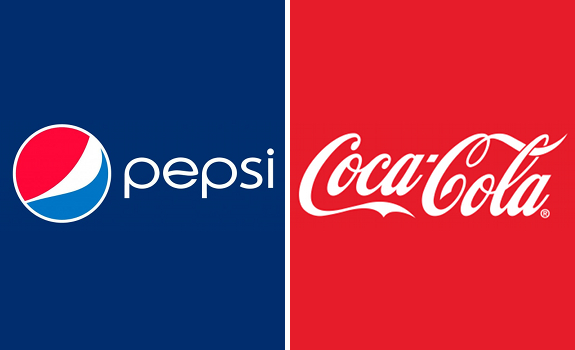
Instead of trying to copy the leader, rather be people’s favorite alternative (logos: PepsiCo, The Coca-Cola Company)
Keep following your plan
According to Yiamarelos, programming success is often found by filling a market gap, e.g. a music hole. “When starting a music station in a crowded market, present a format that doesn’t exist there yet. Don’t try to do the ‘Pepsi vs. Coca-Cola’ thing; copying something and giving it a bit different flavor. Have a point of difference that your competitor cannot copy. Give it that uniqueness.” He underlines that being first to claim a position in your segment is just as important as staying true to your brand and programming. “If you’re the number 1 Classic Rock station in a market and you start doing well, competitors will watch you and want a piece of that pie. They make take 1 or 2 percent off you, but this doesn’t mean that you should be distracted by what competitors are doing and deviate from your vision or strategy. Stick to it.”
Peter Yiamarelos will be back with a guest post, which we’ll publish in a couple of weeks from now.





Do you provide information on or links to programming available for small independent stations? We’re looking for shows, not music. Thank you. Lee